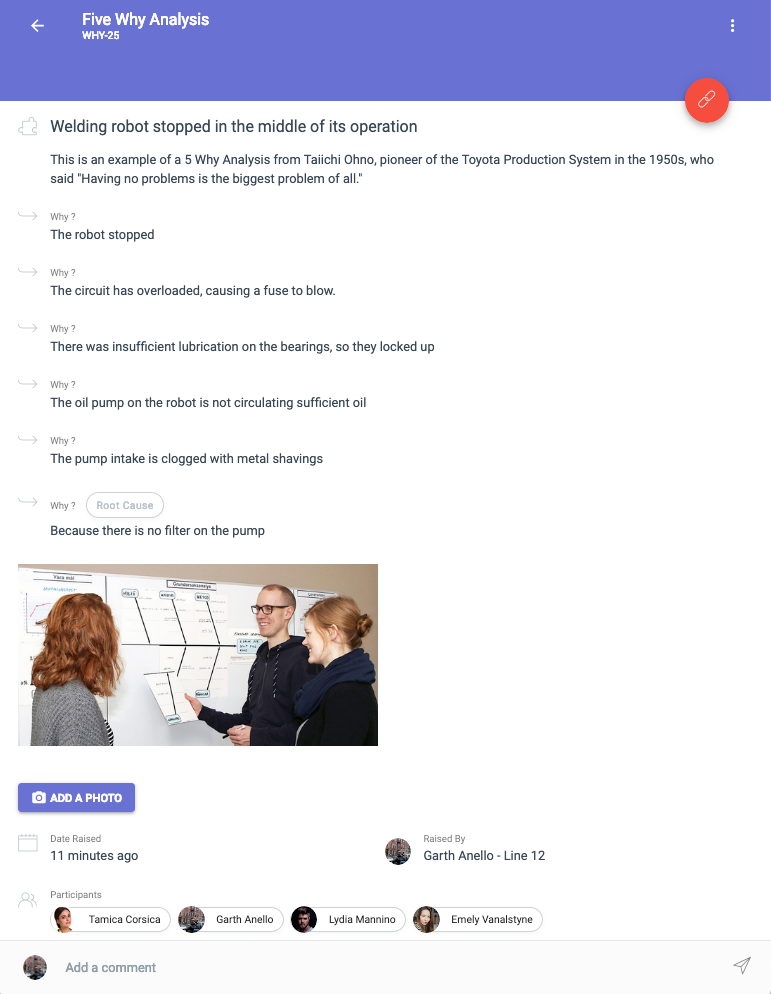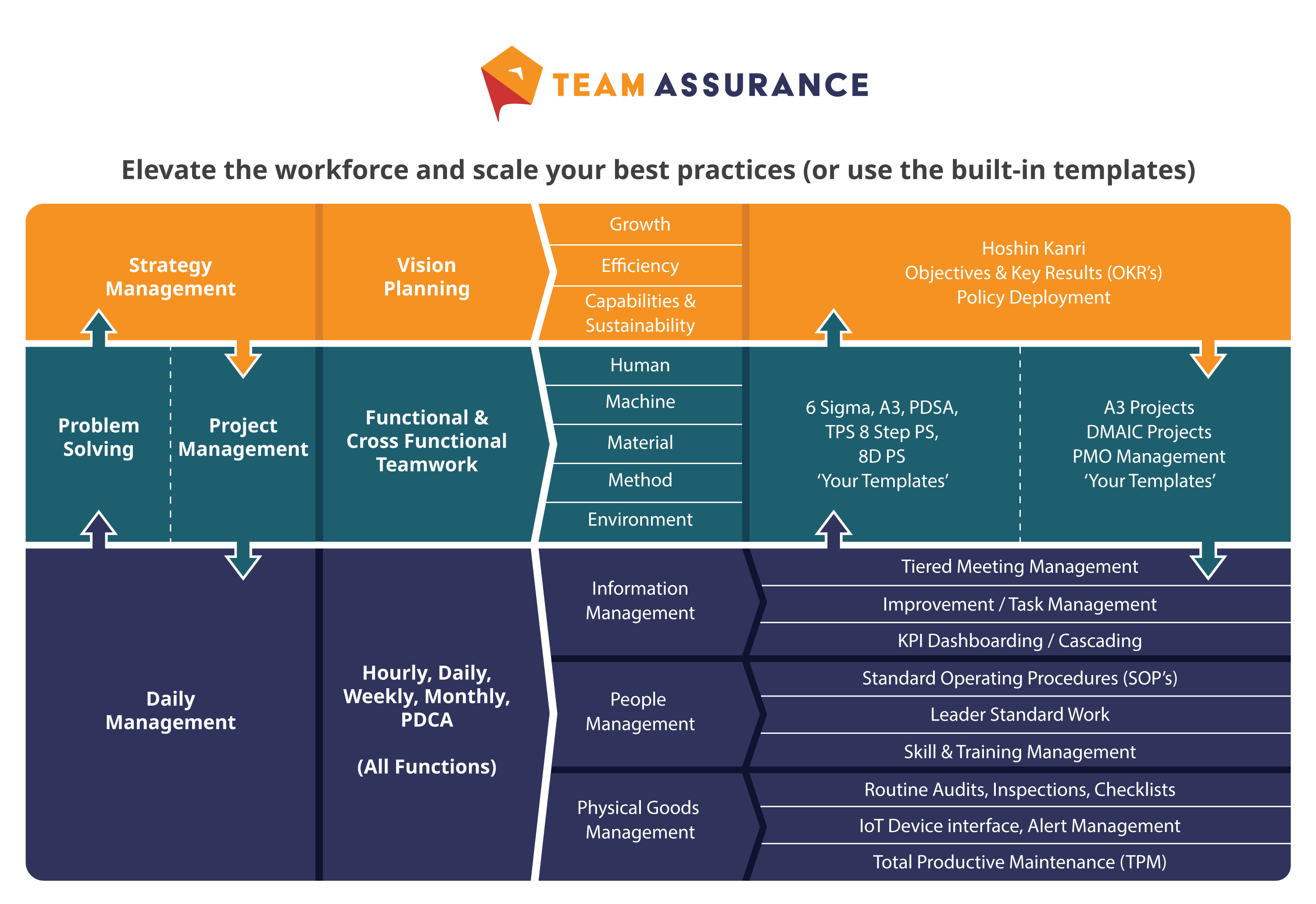Imagine every person in your organization has “…and continuous improvement specialist” in their job title. That’s what you’re aiming for with lean transformation. It means investing in your people and as a result you’ll build resilience into your process improvement system.
A simple and effective starting point is basic problem-solving skills, and incidents are a natural opportunity to develop these skills. Before an incident occurs, each team member should understand the trigger to investigate. Once that is established, team members should be equipped to respond. That means developing problem-solving skills in every employee at every level, actively encouraging collaboration, and taking action on the insights.
Assemble a team for process improvement
The first step, once the incident is under control, is to assemble a cross-functional team of individuals. For example: a team leader, a team member plus representatives from Quality and Maintenance. Each person brings different perspectives and experience to build a more robust understanding of the situation.
Identify possible causes
An Ishikawa diagram (also known as a fishbone diagram) is useful for determining possible contributing factors for each cause. The causes are typically categorized as Machine, Method and Material, Measurement and Person. Everyone should be encouraged to participate, and don’t hold back. There could be multiple contributing factors and you want to capture all possibilities.
Determine root causes
Circle the most likely contributing factors and perform a 5 Why Analysis for each. This really is as simple as it sounds. Ask “Why?” and after each answer ask “Why?” again, until you’ve exhausted the possibilities. Of course, you’re not limited to asking 5 times – it’s a guide to the depth of analysis you should do.

Prioritise and investigate
After completing all the 5 Whys, and identifying the root causes, you need to follow up with actions. The aim is prevent the incident ever occurring again. With that in mind, it may require education, regular inspection or further investigation. For example:
- Actions – to confirm a hypothesis or perform further investigation
- One Point Lesson – to educate team members about best practice
- Improvement – that could help avoid the situation altogether
- Checklist – for a routine inspection or preventative maintenance
- A3 report – for deeper analysis, investigation and resolution
Process Improvement is Part of a greater C.I. framework not just an Isolated Island
As ferramentas Lean, como as técnicas normalizadas de resolução de problemas, os Procedimentos Operacionais Normalizados (SOPs) e um processo de Gestão Diária por Escalões que apoie todo o ciclo PDCA, são fundamentais para alcançar o sucesso da melhoria contínua. No entanto, as organizações devem garantir que as normas e os processos são desenvolvidos em conjunto e não isoladamente. Sem ter em conta todos os processos adjacentes, podemos acabar por ter um desalinhamento das pessoas, silos de informação e procedimentos não optimizados.
A ilustração abaixo demonstra como concebemos a plataforma interconectada TeamAssurance para evitar 'Soluções Pontuais' (digitais ou analógicas) optimizadas localmente e desconectadas que não ajudam, e podem até impedir o progresso em direção aos seus objectivos.

TeamAssurance is an Operational Excellence platform that helps teams with process improvement. If you’re a business in need (or a consultant with clients in need) and you’d like to explore the opportunities that digital-aids to Lean tools provide contact us for a demonstration of the TeamAssurance platform today.





